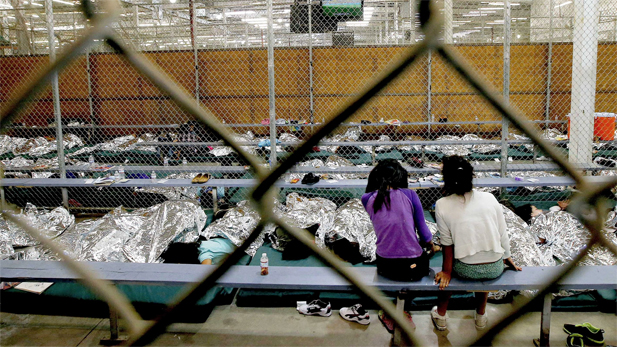 Children and teens from Mexico and Central America inside a Border Patrol detention facility in Nogales, Ariz., in 2014.
Children and teens from Mexico and Central America inside a Border Patrol detention facility in Nogales, Ariz., in 2014.Listen
The number of unaccompanied minors from Mexico and Central America apprehended at the U.S. border is expected to be high this year but not as extreme as last year, experts said.
Still, 2015 is on pace to see the second-highest number of child migrant arrivals in history, said Marc Rosenblum, deputy director of U.S. Immigration Program at the Migration Policy Institute.
Last year more than 67,000 children and teens were apprehended at the U.S. border with Mexico. Most of them turned themselves in to Border Patrol agents.
Data from October through February show that apprehensions are down compared to the same time the previous fiscal year, although the busiest months for illegal migration are just beginning, Rosenblum said.
Typically March, April and May are when most unaccompanied minors are apprehended at the border. Last year was the exception with thousands of kids apprehended in June and July.
“Right now is the moment when we’ll see what this year is going to look like,” Rosenblum said.
In Arizona, the Tucson sector is down 40 percent in apprehension of young migrants traveling alone with 2,331 detentions compared to 3,880 in the same time last year, data from U.S. Customs and Border Protection showed.
Texas, where the biggest spike was seen last summer, also has had fewer apprehensions. Yuma’s sector of the Border Patrol had a 56 percent increase in apprehension of minors from October to February, data showed.
Rosenblum said the increase in enforcement in the part of the Mexican government has contributed to the decrease of Central American child migrants reaching the U.S. border. The Mexican government has almost doubled the number of children deported to Central America, Rosenblum said.
However the key factors that contributed to the influx last year remain: increase in violence and lack of economic opportunities in Guatemala, Honduras and El Salvador, and the desire to reunite with family members already in the U.S., Rosenblum said.
"As long as those push and pull factors remain," he said, so do the challenges of handling the unaccompanied children migration.

By submitting your comments, you hereby give AZPM the right to post your comments and potentially use them in any other form of media operated by this institution.